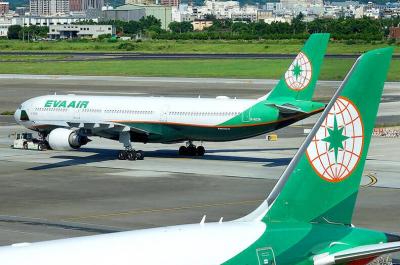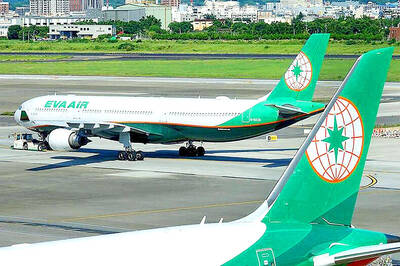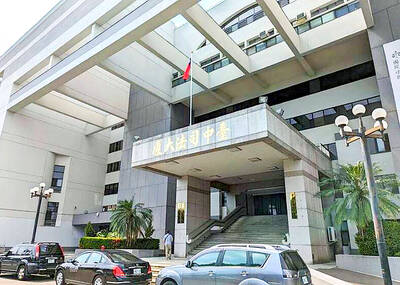The American Physical Society conferred the prestigious Maria Goeppert-Mayer Award to Taiwan-born and American-raised physicist Michele Ma Chung-pei (馬中珮) recently in recognition of her important contributions to theoretical astrophysics.
Ma, who recently joined the astronomy faculty at the University of California at Berkeley (UC Berkeley), was chosen as the only recipient of the 2003 Maria Goeppert-Mayer Award for her "important contributions to theoretical astrophysics, particularly in the areas of relativistic evolution of density perturbations, testing of structure formation models with massive neutrinos and the clustering and dynamics of dark matter halos around galaxies," according to the American Physical Society.
The prestigious Maria Goeppert-Mayer Award was established through sponsorship by the General Electric (GE) Foundation in 1985 in memory of the physicist of the same name who shared the 1963 Nobel Prize in physics with two other scientists for her research on the shell model of the atomic nucleus.
Goeppert-Mayer was the second woman physicist in the world to receive the Nobel Prize in physics, behind Madame Pierre Curie, who became a Nobel laureate in 1903.
The American Physical Society and the GE Fund jointly facilitate the Maria Goeppert-Mayer Award to recognize and enhance outstanding achievements by a woman physicist in the early years of her career and to provide opportunities for her to present these achievements to others through public lectures in the spirit of Maria Goeppert-Mayer.
The award is to be given to a woman no later than 10 years after she has been granted her doctorate in order to have an effect upon the early stages of her career, for scientific achievements that demonstrate her potential as an outstanding physicist.
The Maria Goeppert-Mayer Award, presented annually, consists of US$2,500 plus a US$4,000 travel allowance to provide opportunities for the recipient to give lectures in her field of physics at four institutions and at the meeting of the American Physical Society at which the award is bestowed and a certificate citing the contribution made by the recipient.
Ma, 37, who became aware of her life's calling at the age of 12, went to the US when she was 17 to study physics at the Massachusetts Institute of Technology (MIT). She received both her undergraduate degree and doctorate in physics from MIT in 1987 and 1993, respectively.
She was a prize fellow at the California Institute of Technology and an assistant and associate professor of astronomical physics at the University of Pennsylvania before joining the UC Berkeley's astronomy faculty.
Ma's primary research interests are dark matter, the cosmic microwave background, and the large-scale structure of the universe.
Among the major honors Ma has received are the Annie Cannon Award in Astronomy in 1997, the Sherman Fairchild Fellowship, Caltech in 1993 and Phi Beta Kappa in 1987.
While studying particle physics and theoretical cosmology with Alan Guth and Edmund Bertschinger at MIT, Ma was enrolled in the New England Conservatory of Music in Boston for violin-performance classes to hone her violin playing skills, which she began studying in her formative years in Taiwan.
A violin prodigy, she won first prize in the Taiwan National Violin Competition in 1983.
Ma is returning to Taiwan shortly to visit her parents who are still living in Taipei.
Her father, Ma Chi-shen (馬驥伸), is a renowned scholar in journalism, while her mother, Huang Chao-heng (黃肇珩), is formerly director of the Domestic News Department of the Central News Agency. Huang has also been president of the KMT-run Chengchung Books and Publishing House before being appointed a member of the Control Yuan by former President Lee Teng-hui (李登輝).

EVA Airways today confirmed the death of a flight attendant on Saturday upon their return to Taiwan and said an internal investigation has been launched, as criticism mounted over a social media post accusing the airline of failing to offer sufficient employee protections. According to the post, the flight attendant complained of feeling sick on board a flight, but was unable to take sick leave or access medical care. The crew member allegedly did not receive assistance from the chief purser, who failed to heed their requests for medical attention or call an ambulance once the flight landed, the post said. As sick

A drunk woman was sexually assaulted inside a crowded concourse of Taipei Railway Station on Thursday last week before a foreign tourist notified police, leading to calls for better education on bystander intervention and review of security infrastructure. The man, surnamed Chiu (邱), was taken into custody on charges of sexual assault, taking advantage of the woman’s condition and public indecency. Police discovered that Chiu was a fugitive with prior convictions for vehicle theft. He has been taken into custody and is to complete his unserved six-month sentence, police said. On Thursday last week, Chiu was seen wearing a white

EVA Airways, one of the leading international carriers in Taiwan, yesterday said that it was investigating reports that a cabin crew manager had ignored the condition of a sick flight attendant, who died on Saturday. The airline made the statement in response to a post circulating on social media that said that the flight attendant on an outbound flight was feeling sick and notified the cabin crew manager. Although the flight attendant grew increasingly ill on the return flight, the manager did not contact Medlink — a system that connects the aircraft to doctors on the ground for treatment advice during medical

The Taichung District Court yesterday confirmed its final ruling that the marriage between teenage heir Lai (賴) and a man surnamed Hsia (夏) was legally invalid, preventing Hsia from inheriting Lai’s NT$500 million (US$16.37 million) estate. The court confirmed that Hsia chose not to appeal the civil judgement after the court handed down its ruling in June, making the decision final. In the June ruling, the court said that Lai, 18, and Hsia, 26, showed “no mutual admiration before the marriage” and that their interactions were “distant and unfamiliar.” The judge concluded that the couple lacked the “true intention of